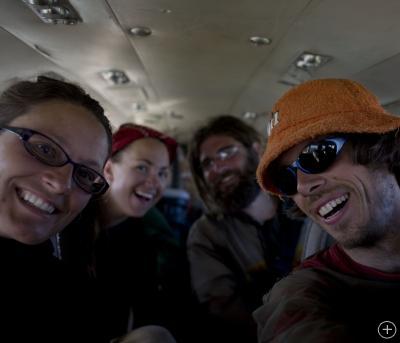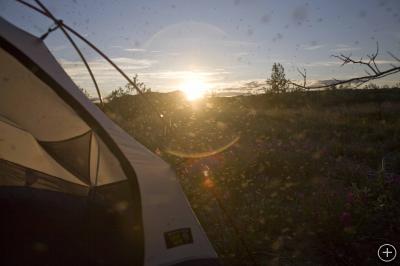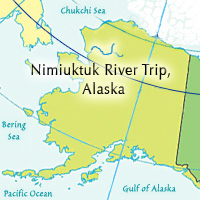Bringing It All Back Home
Journal Entry 8: Monday, July 7, 2008, 12:30 AM
NOATAK VILLAGE, BROOKS RANGE, ALASKA– Our wildlife list so far includes moose, grizzly bear, musk oxen, dall sheep, rough-legged hawk, peregrine falcon, and a whole bunch of smaller birds and rodents. No caribou this time of year, and Mark pointed out that probably much of the game vacates the region during bug season. Ricky verified this, and explained that people and animals migrate to the coast during mid-summer, where the breeze is more reliable.
We ate breakfast with Ricky and he toured us through a small family picture album – a veritable history of the entire region that bridged seamlessly to the caches and other evidence of ancient habitation that we’d seen along the way. Ricky embodied at least a vestige of the old native way, and we all learned a lot from him during our short stay.
Two scorching days later, here we are camped at the end of the runway in the village of Noatak. I think it is day 12 since leaving Kotzebue, and also day 12 of the midnight sun. I think it rained for a total of 30 minutes during our entire time out here, but the huge break in weather was easily offset by the viscous mosquitoes. Along those lines, here is some wisdom to heed: Don’t come to the Arctic during the growing season if you’re looking for enjoyment.
On the other hand, if you’re searching for answers about changing climate and changing Arctic vegetation, our strategy of using repeat photography to guide the scientific sampling seems to be fruitful. Although the analysis still lies ahead of us, our impression is that we can identify areas that are changing, and areas that are not changing, based on a host of parameters that we sampled. Ultimately, we’d like to extrapolate what we’ve learned across large areas, in order to understand better the heterogeneity of vegetation change in the Arctic, and the consequences of that change on the global climate system. Thanks for following along, and check back shortly for reports from the upcoming Colville River trip.

The whole crew flying out of Noatak village. We really look disappointed to be out of the mosquitoes!












How is the vegetation change affecting the tundra ecosystem? Also are some of the Arctic animals slowly adapting to decrease their heat conservation adaptations (thick bodies, thick fur, short limbs, and short ears) due to increasing temperature? Or is the temperature rise not enough?
Vegetation is a critical component of any ecosystem, so when the vegetation changes, the rest of the ecosystem is affected. No studies that I know of currently document adaptations such as those you suggest, but I would expect such adaptations to be occurring presently. Part of the difficulty with detecting ecosystem changes, such as those you suggest, is that there needs to be a reliable old data set, against which you can compare a new (repeated) data set. Without these reliable old data sets, we are often left with only photographs!